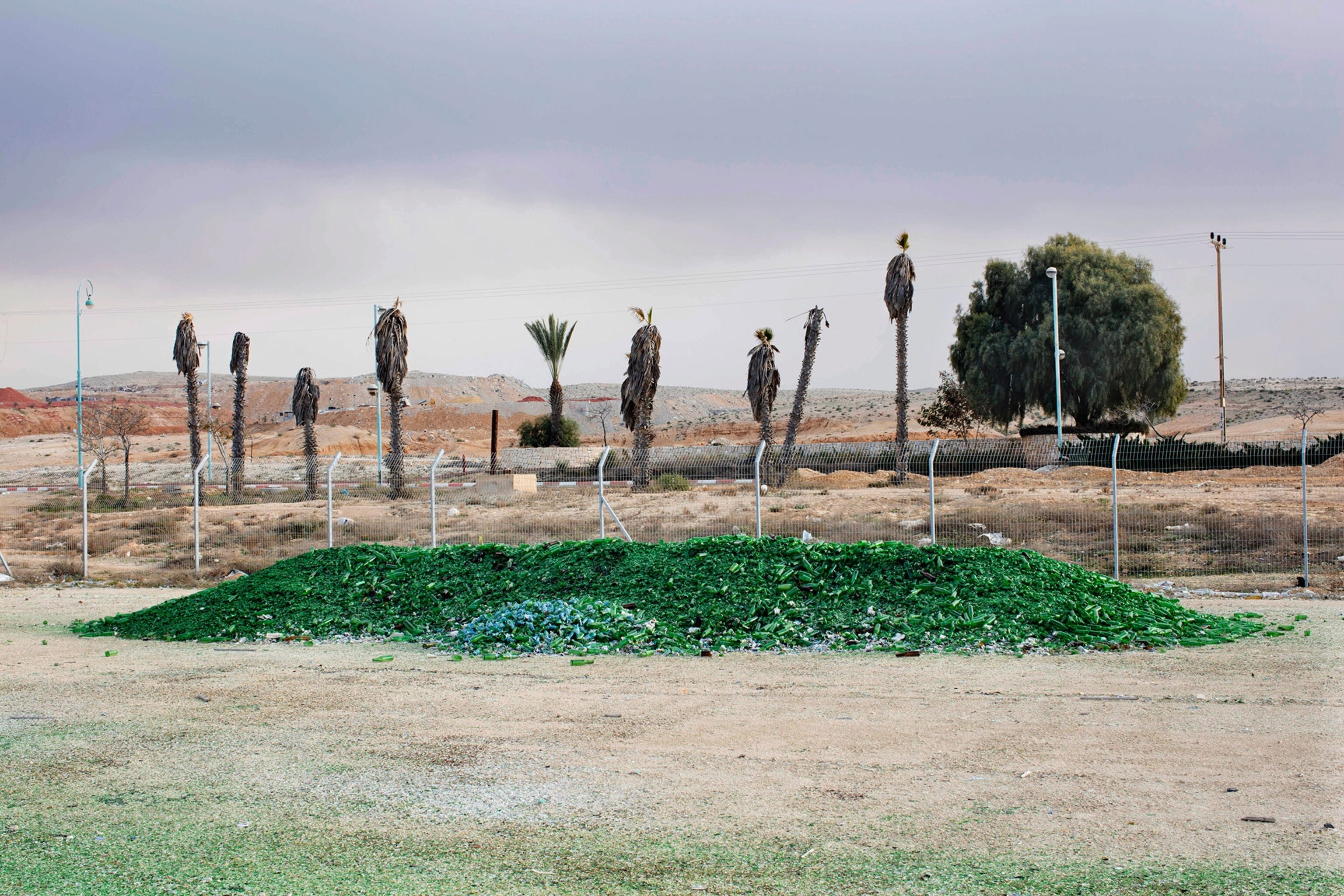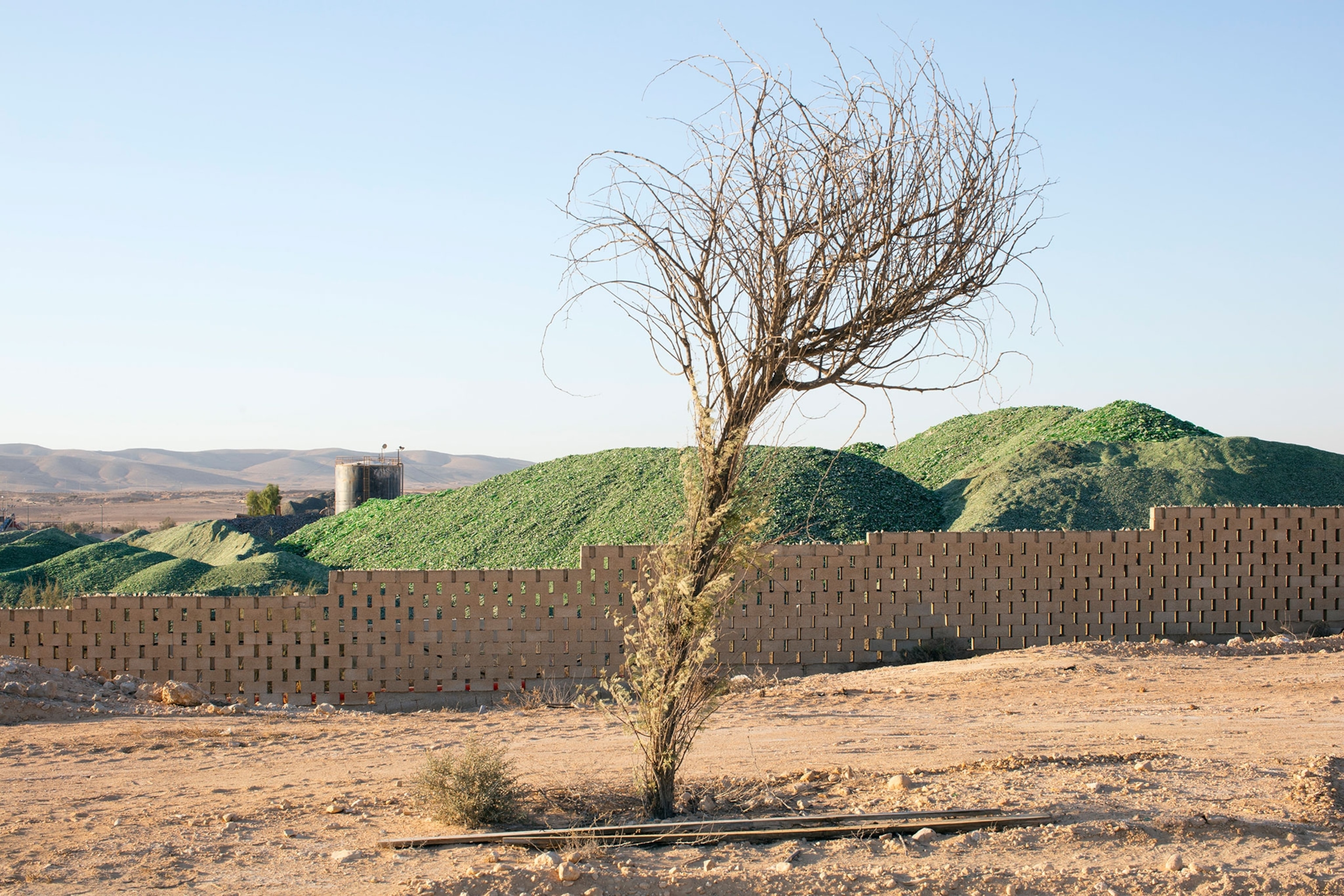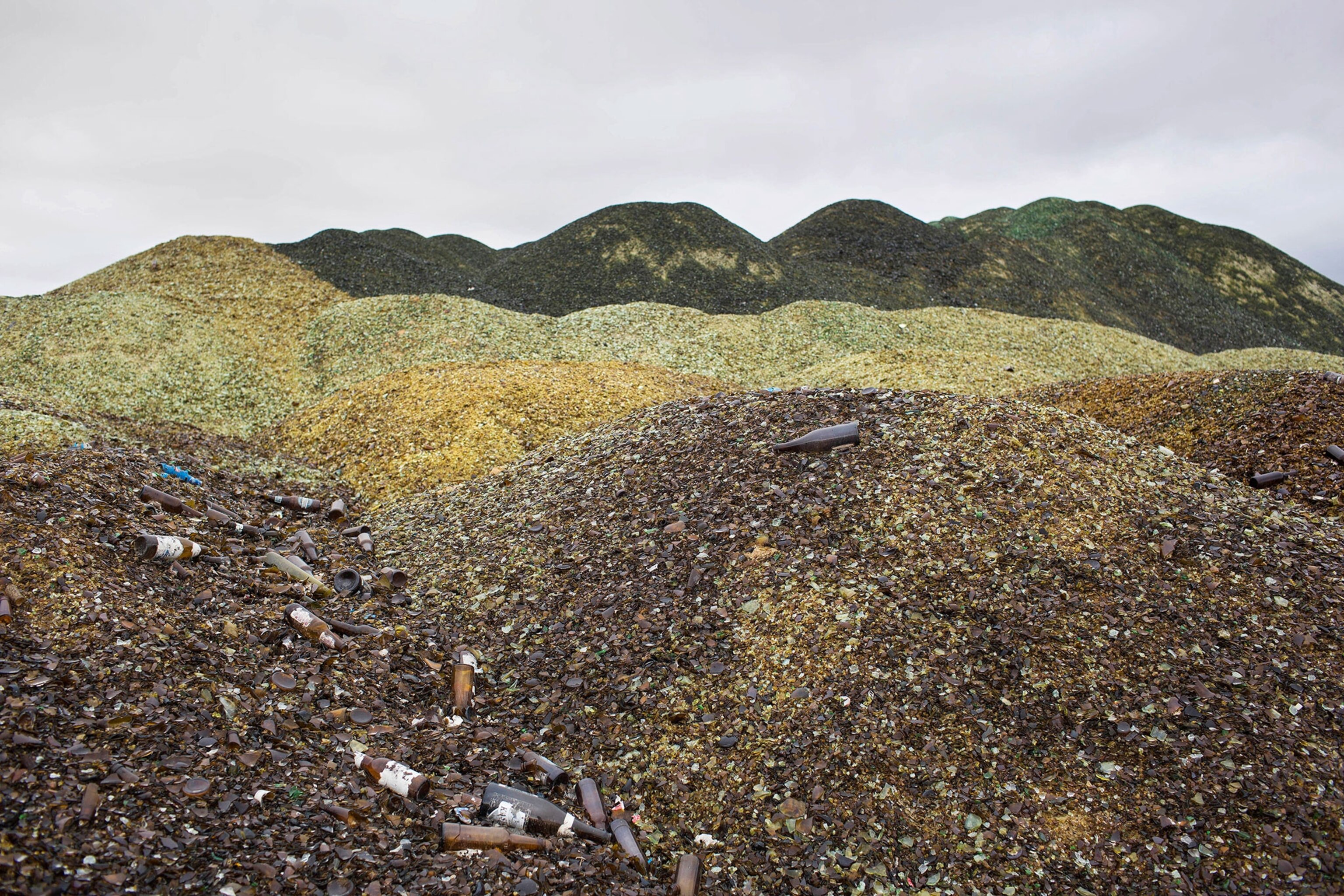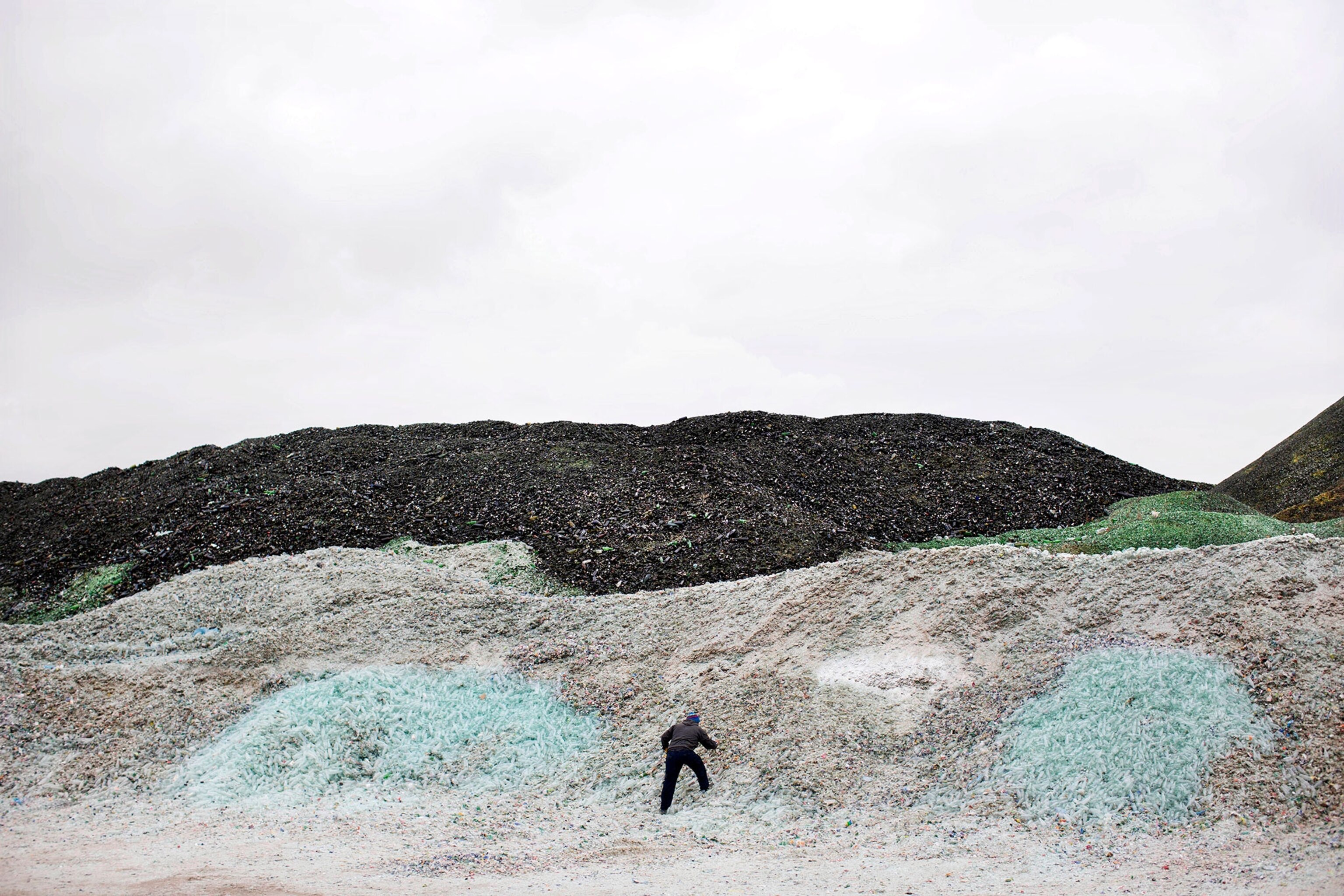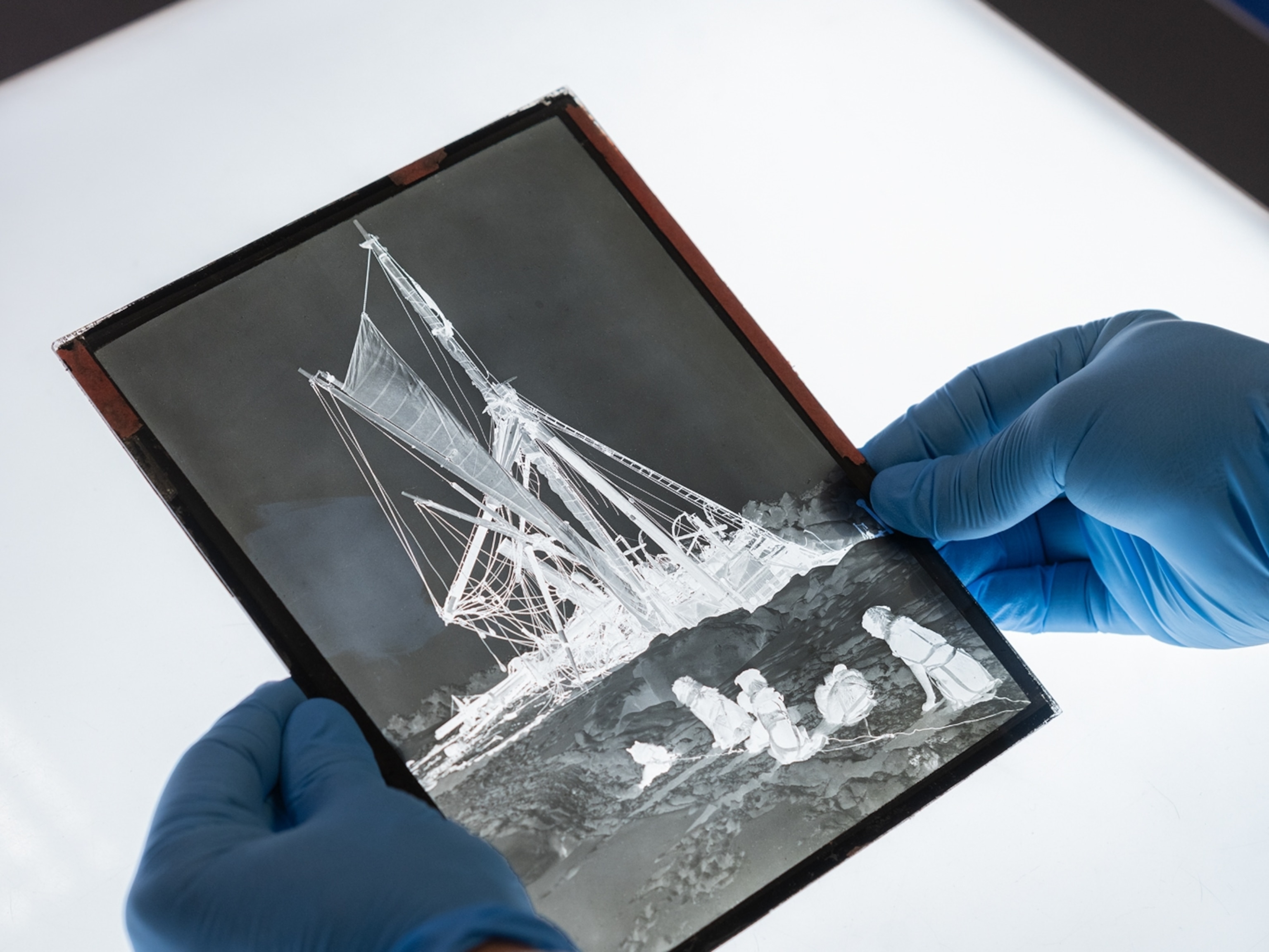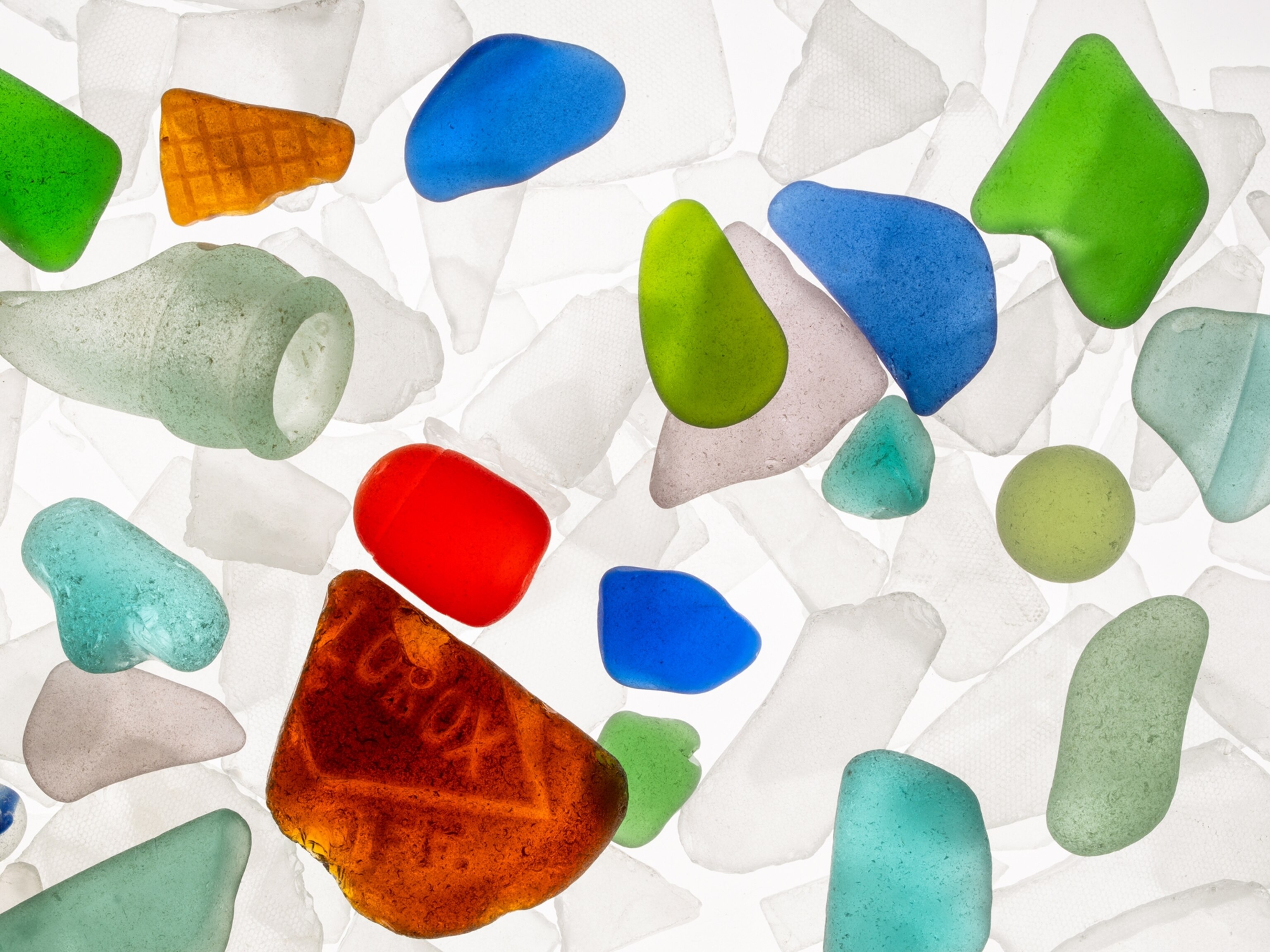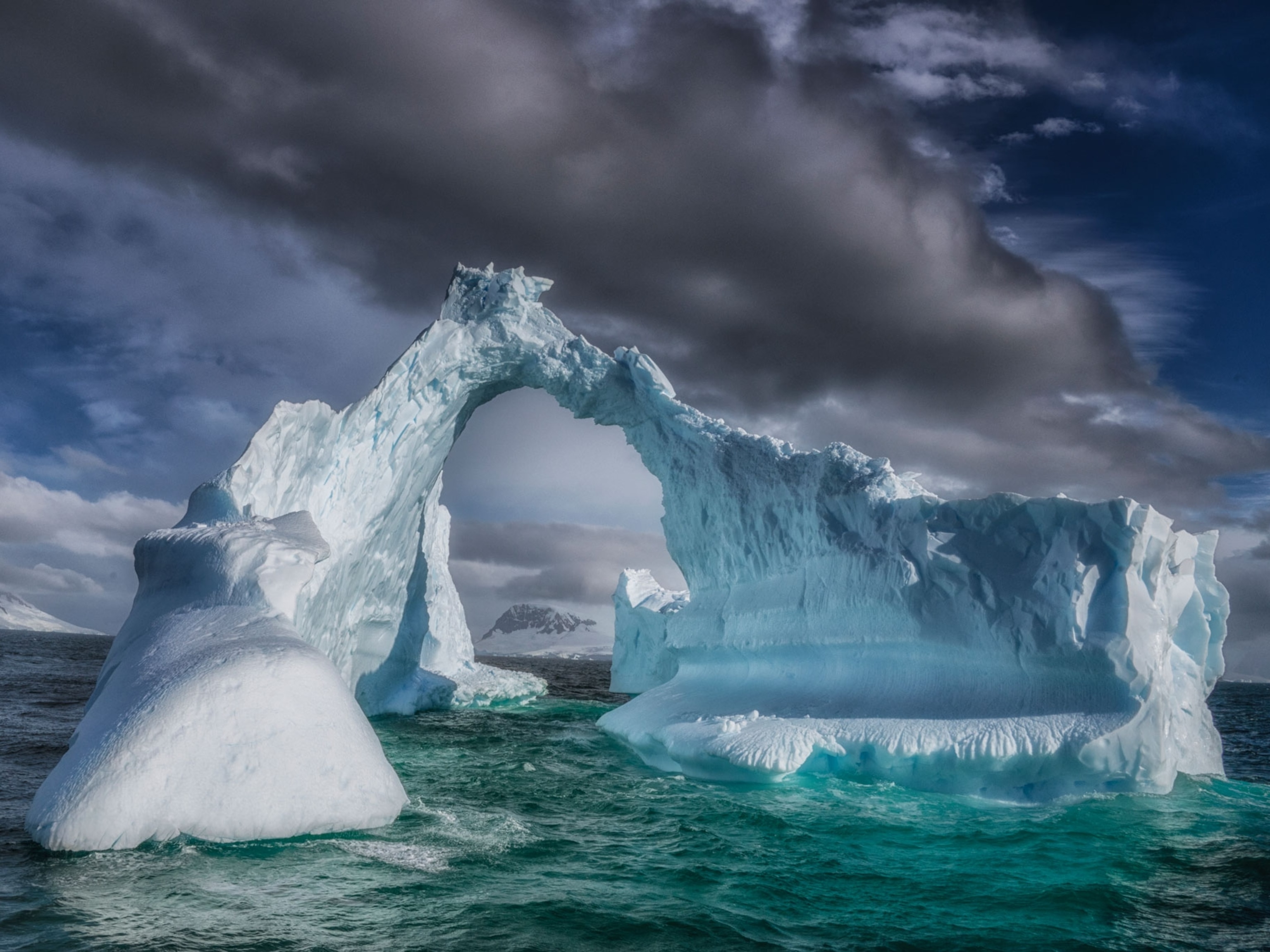
The Unlikely Beauty of Broken Glass
At a glass factory in Israel, mountains of broken bottles become art under photographer Oded Balilty’s creative eye.
“It's very difficult to find new things in your own backyard.”
So says Israeli photographer Oded Balilty, who lives in Tel Aviv and works for the Associated Press.
A few years ago, Balilty was on assignment in Yeruham, Israel, photographing a factory that produced concrete bricks for the barrier between Israel and the West Bank. While he was shooting, something across the street caught his eye—mountains of colorful, sparkling, broken glass rising up from the lot behind a glass-bottle factory.
Balilty snuck in through the back, took one picture, and left. But the memory stayed with him. In all his years of photographing in Israel, he had never seen anything like it.
When he had a week off two years later, he went back to the factory to explore. “I said, ‘OK, well, the gate is open,’ so I entered without asking anyone,” he recalls. “And I started to take pictures, and I worked there for, like, two hours.”

Then three employees came out and asked what he was doing, saying he wasn’t allowed to be there without permission. “They were very nice, actually.” Balilty says. “So they took me to the factory manager’s office.” When the manager arrived, she made him a cup of coffee and invited him to continue to photograph—after going through the proper channels. “That's something that I always do,” he told her. “But, you know, I was there, and those colors were so beautiful, so I just walked in.”
After a month, Balilty received the necessary permit and returned. The factory employees showed him around, explained their processes, and then allowed him to photograph unencumbered for five days.
“And it was amazing,” he says, “to see all these colors in this monochromatic area of the country.”
The glass factory makes bottles for all the big beverage companies in Israel. They make more than a million bottles each day, and Balilty says they lose about 300,000 of those, either through breakage or while switching the color and style in production. Those broken bottles go outside, where they join glass that’s trucked in every day for recycling. All the glass is sorted by color, and the mountains change shape every day.
“It's like sand dunes, literally, because glass is made from sand,” he says. “But it's not that the wind moves them, but the production.” Even the change in seasons creates dramatic differences in the scenery.
“I've photographed in the winter and the spring, and I also went in the summer,” he says. “The light looks different, the sky looks different, the dust on the glasses make it look totally different.”
And for Balilty, the beauty is found not just in the shapes and colors but also in the symbolism. “They put the glasses in the desert,” he says. “It's very symbolic. It's like the bottles are dying there, and they get new life. It's like ‘from dust to dust.’ So to be in the middle of this circle, it’s something that I really enjoy watching.”

